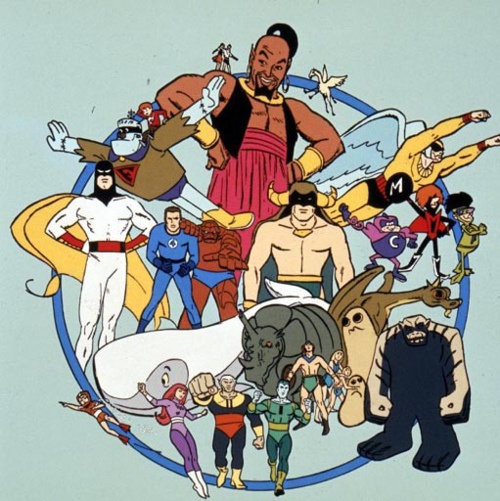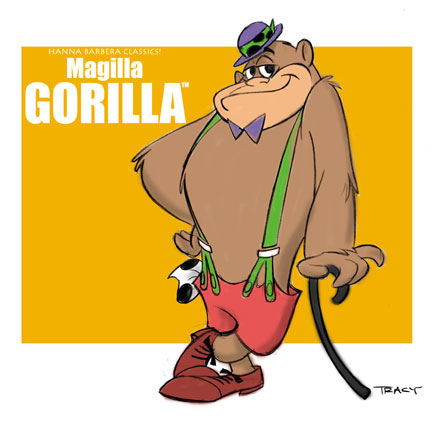
@TheBelser
What’s happening people? It’s your boy The Belser back once again to rivet your minds with useless information. I know a lot of people are wondering: why am I committing so much time to these very very very long articles? The answer is simple: because I love doing them (and I have no life).
Despite all that, I have really enjoyed the response and feedback I’ve been getting. In the past, I’ve done articles about Captains Marvel, swamp monsters and space cops. For this article, I’m going back in time to a little time called the 1960s. This era produced some pretty good cartoons! Case and point, I like to talk about the 1966-1968 Saturday morning cartoon lineup. It was dominated by a forgotten group of characters in the overall pop culture zeitgeist…
https://youtu.be/E7OlysRBP90
During this time, Hanna-Barbera Productions created a group of essentially homegrown superheroes. I’ve always enjoyed these cartoons and I love talking them about you (hence, this article). We are going to go in-depth and look at how a lot of these characters were created and how they have continued into the modern day.
How I Found the Characters:
I first discovered these characters like a lot of people my age by watching the early years of Cartoon Network. When Cartoon Network first started, they displayed a lot of cartoons from the 60’s, 70’s and 80’s that I had never even heard about prior to watching the Network. An interest was sparked by the Hanna-Barbera superheroes. The first of the heroes I recall watching was Space Ghost and he has since become my favorite of the bunch. Space Ghost led me to Birdman and The Herculoids and many others.
Hanna-Barbera:

Legendary animators William Hanna and Joseph Barbera first met at the animation division of Metro-Goldwyn-Mayer( MGM) studio in 1939. This was the beginning of a partnership that would last 60 years. Hanna supervised the animation while Barbera oversaw the stories. The first cartoon they made together, Puss Gets the Boot, featured a cat named Jasper and a mouse named Jinx, was released in 1940. The short was a complete success and got nominated for the ‘ Best Short Subject’ Oscar.

The cartoon served as the pilot for MGM’s first major animation hit, Tom and Jerry . Hanna and Barbera served as directors of the Tom and Jerry shorts for over 20 years. The Tom and Jerry series won 7 Oscars for Best Short Subject (Cartoons) between 1943 and 1953. However, The awards and recognition were awarded to MGM producer Fred Quimby, who had no hand whatsoever in the creation of the shorts.
NOTE: During their time at MGM, the pair also directed a number of hybrid animated and live-action sequences for MGM’s feature films like:
- Anchors Aweigh: A famous dance sequence featuring actor/dancer Gene Kelly and Jerry
- Dangerous When Wet: A synchronized swimming number with actress Esther Williams and Tom and Jerry.
After many years, Hanna and Barbera became the supervising animation producers in charge of the MGM animation. However, MGM decided to close its cartoon studio in 1957 to make way for its newest competition: television.
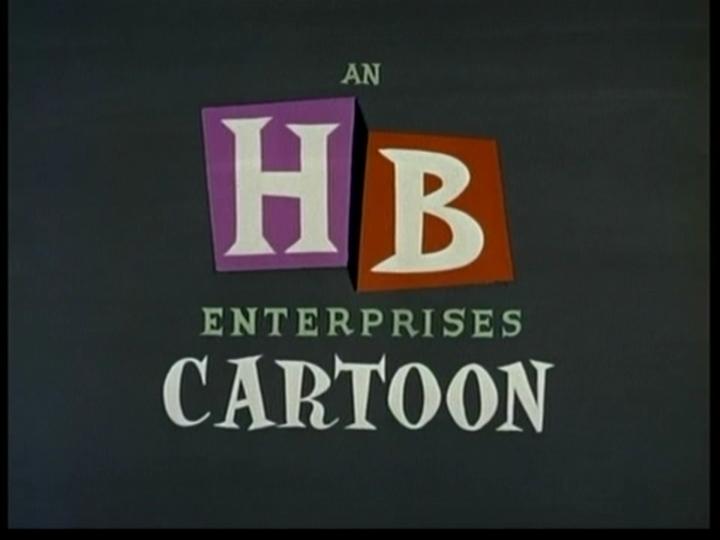
After the shutdown, Hanna and Barbera began to develop concepts for new animated TV programs. Hanna and Barbera’s new company, H-B Enterprises, officially opened for business on July 7, 1957. According to an article for the New York Times, “H-B Enterprises was the first major animation studio to successfully produce cartoons exclusively for television” (Benzel, 1996). “Caveman to Carp: The Prime-Time Cartoon Devolves”. The New York Times). The company would initially specialize in funny anthropomorphic talking animals.
Their first original program, The Ruff and Reddy Show, debuted in December 1957 on NBC. Their next program, The Huckleberry Hound Show, was their first hit. NOTE: The Huckleberry Hound Show made television history as the first animated program to win an Emmy.
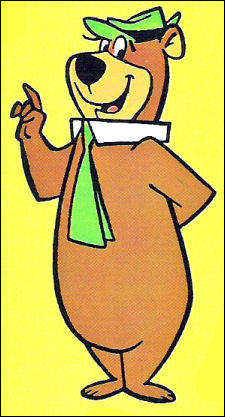
Though the title character was popular, the first real breakout star for Hanna-Barbera was a cartoon bear that was also featured on the same show: Yogi Bear. The picnic basket loving bear with his collar/tie combo and his catchphrase (“I’m smarter than the av-er-age bear!”) made him a favorite of households all over America. Yogi became the flagship character for Hanna-Barbera. Yogi got his own TV show in 1960 (The Yogi Bear Show) and was the star of the first feature-length theatrical animated movie based on a television show (‘Hey There, It’s Yogi Bear!’ in 1964).
After these successes, H-B Enterprises changed its name to Hanna-Barbera Productions in 1959. In a trend that repeat in Hanna-Barbera for decades, Yogi spawned a whole cavalcade of similar characters. Here are some of the most notable ones:
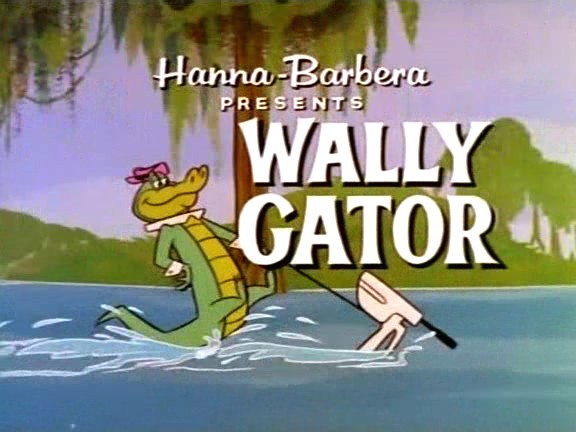
- Wally Gator: An alligatorin a pork pie hat who lived in the city zoo but he would escape to check out the outside world. Catchphrase: “See Ya Later, Wally Gator!”
- Magilla Gorilla: A gorilla in bowtie and derby hat who spent most of his time in the front display window of a pet shop to get sold Magilla would get purchased but only for a short time. After a zany cartoon, Magilla would always end up returned and the whole cycle would start all over again. NOTE: Magilla inspired a minor surf hit “Makin’ With The Magilla” sung by Little Eva (who was famous for her song “The Loco-Motion”).
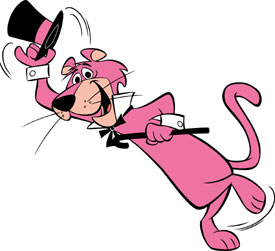
- Snagglepuss: a pink, effeminate-sounding cougar who desperately wants to be an actor. The character had many catchphrases, most notably, adding the word ‘even’ to the end of his sentences (“I wonder if he knows my telephone number, even”). Other catchphrases: “Exit, stage left!”
The next H-B innovation came from a desire to create a show that appealed to both kids and adults. Hence, The Flintstones were born. Based on the popular 1950’s sitcom The Honeymooners, the show follows Fred Flintstone, Fred’s wife Wilma, Fred’s best friend/neighbor Barney Rubble and Barney’s wife Betty. The hook of the show was taking the experience of modern suburban life and placing it in a prehistoric setting. Debuting on September 30, 1960, The Flintstones was the first ever prime-time cartoon series in American TV history.
NOTE: For 30 years, The Flintstones was the most financially successful and longest-running network animated franchise until it was beaten by the current champs, The Simpsons (2000, “Excavating Bedrock: Reminiscences of ‘The Flintstones,'” ).
The Jonny Quest Effect:
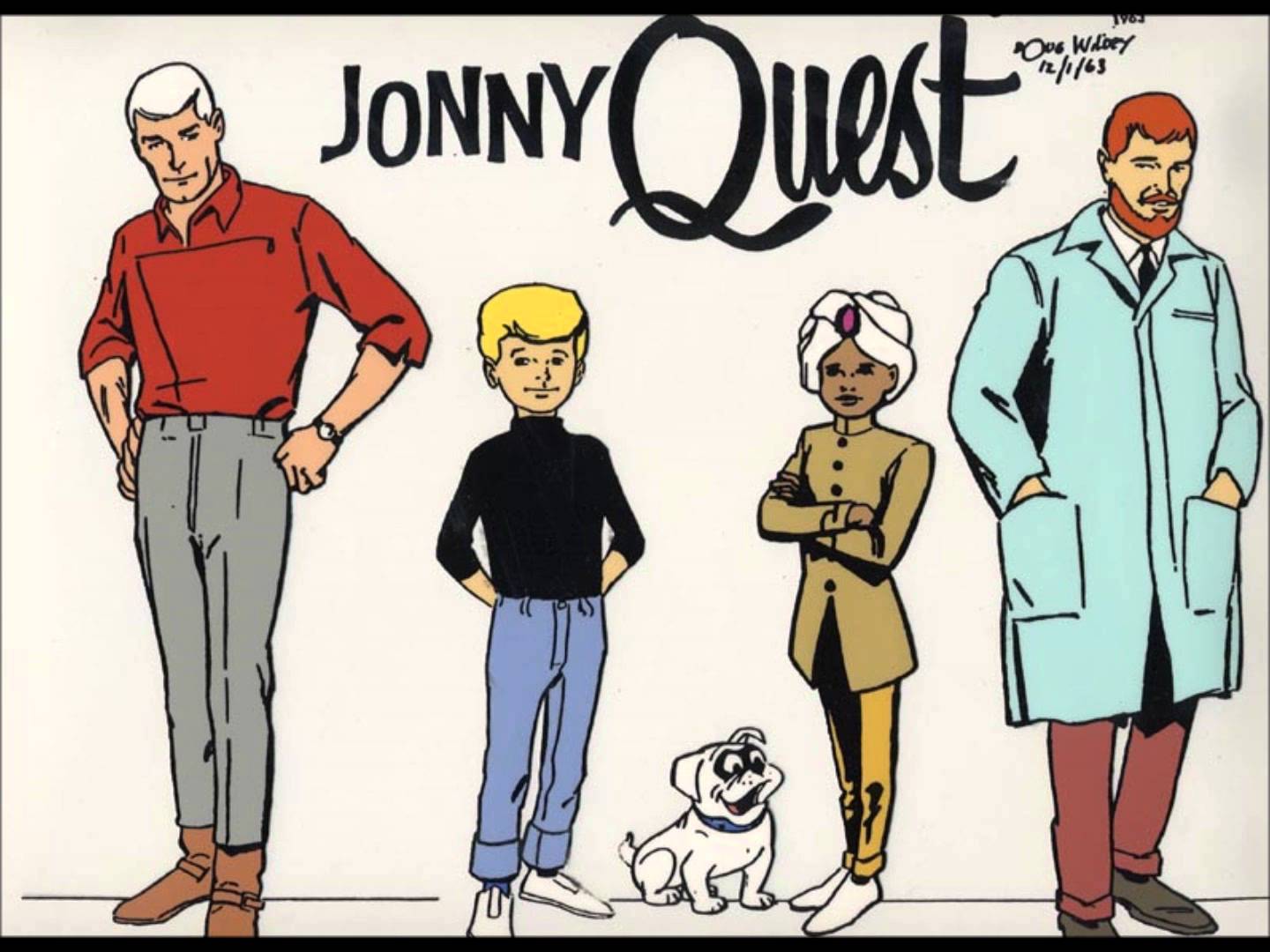
After taking over TV cartoon comedy, Hanna-Barbera went into another genre to test the waters: action-adventure. Having been a fan of a radio serial called Jack Armstrong, The All-American Boy, H-B animator ( and comic book artist), the late Doug Wildey drew up a presentation for a show based on the Jack Armstrong character, using magazines like Popular Science, Popular Mechanics, and Science Digest as a reference and updating cutting edge devices. As it turns out, H-B could not get the rights to Jack Armstrong. Hanna-Barbera had Wildey rework the concept into an all new show. Wildey got inspiration from other ‘boy adventurer’ comics like Tom Swift and Terry and The Pirates. The only real note from Hanna-Barbera is that they wanted Wildey to add superspy elements like the then-popular James Bond movie Dr. No.
As Wildey notes in an interview: Joe Barbera saw Dr. No “and wanted to get in stuff like [Bond’s code-number] ‘007’ — numbers. Which we included, by the way, in the first [episode of] Jonny Quest. It was called ‘Jonny Quest File 037’ or something. We dropped that later; it didn’t work. But that was his father’s code name as he worked for the government as a scientist and that kind of thing.” (Olbrich, D. 1986, “Doug Wildey, an interview with the creator of Jonny Quest”).
The name of Jonny Quest was a two-man collaboration: Joe Barbera came up the first name ‘Jonny’ and Wildey picked the last name ‘Quest’ out of a phone book. The look of Jonny was based on child actor Jackie Cooper (who, as an adult, would portray Perry White in the classic Christopher Reeve Superman movies). The voice of Jonny was done by then-child actor Tim Matheson (best known as ladies’ man Eric ‘Otter’ Stratton in the classic 70’s college comedy National Lampoon’s Animal House).
Like The Flintstones before it, Jonny Quest debuted on prime-time television on September 18, 1964 on the ABC network. Comic boon historian David Herman said the following of Jonny Quest: Wildey’s designs on Jonny Quest gave a cartoon a distinctive look, with its heavy blacks [i.e. shading and shadow] and its Caniff-inspired characters. . . . The show was an action/adventure story involving the feature’s namesake, an 11-year-old boy. The cast of characters included Jonny’s kid sidekick, named Hadji, Jonny’s globetrotting scientist dad . . . and the group’s handsome bodyguard, secret agent Race Bannon, who looks as if he stepped out of the pages of [Caniff’s comic strip] Steve Canyon. . . . The look of Jonny Quest was unlike any other cartoon television show of the time, with its colorful backgrounds, and its focus on the characters with their jet packs, hydrofoils, and lasers. Wildey would work on other animation projects, but it was with his work on Jonny Quest that he reached his widest audience, bringing a comic book sense of design and style to television cartoons (Wikipedia, Jonny Quest (TV series)).
Though it was popular, some parents complained that the show was much too mature and violent for younger viewers. It did feature realistic gun battles, graphic fist fights, racist depictions of people of color and characters died in gruesome ways. Here are some examples:
- Race Bannon frequently shot and killed bad guys. Others are thrown off cliffs or smashed by boats.
- An invisible monster destroys an entire village and all its people.
- A giant lizard eats its creator.
Though its original run was only one season, Jonny Quest was a huge rating success. The show found a greater audience through re-runs and syndication. Jonny has also given two other H-B series: a 1986 revival titled The New Adventures of Jonny Quest and a 1996 show called The Real Adventures of Jonny Quest (one of the first shows on television to use 3-D animation). As such, Jonny Quest is one of the few shows in TV history to have been broadcast on each of The Big Three networks: ABC, NBC and CBS. Jonny was also a watershed moment for Hanna-Barbera as it showed the audience that they can handle the action genre.
https://www.youtube.com/watch?v=_ZU0uFgrhr0
Early Prototypes:
Like most media outlets, Hanna-Barbera was aware of the impact of the Silver Age of Comics. This renewed interest in superheroes would lead to hits like the 1966 Batman series, a revival of Mighty Mouse, and the cartoon Underdog. Other cartoon studios like Filmation and Grantray-Lawrence Animation were developing entire programming blocks dedicated to the DC and Marvel superheroes respectively. Hanna-Barbera saw a chance to jump on the bandwagon while retaining their trademark charm. Like the early Hanna-Barbera cartoons, they started with talking animals and began to evolve. Here are some of their attempts:
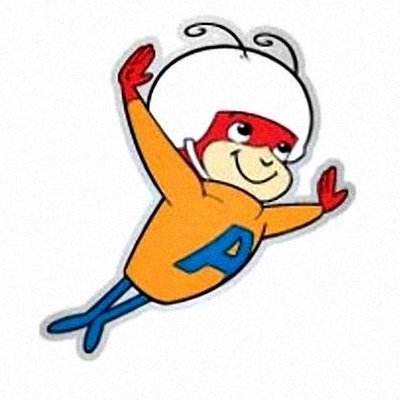
- Atom Ant: A brawny superhero ant dressed in a football helmet and a big sweater with a big ‘A’ on it. He operated out of a state of the art anthill . His powers included the ability to fly, superspeed, super strength, and invulnerability. He was often contacted by the police as they relied on Atom Ant to do basically all their police work. Catchphrase: “Up and at ’em, Atom Ant!”
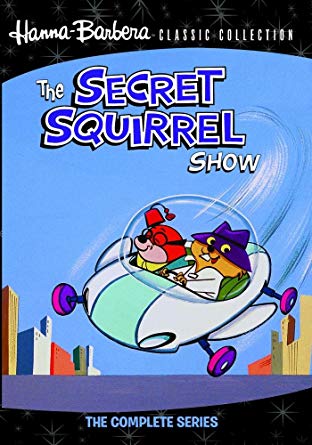
- Secret Squirrel: Another Hanna-Barbera sendup of the James Bond films. Known as Agent 000, Secret Squirrel was a buck toothed talking squirrel armed with a purple fedora hat and a white overcoat full of secret weapons. As an agent of the International Sneaky Service, SS, as he was called, took orders from his boss, Double-Q. and fought evil enemy agents with his sidekick, Morocco Mole. Secret Squirrel’s main archenemy is a human villain called Yellow Pinkie (a parody of the James Bond villain Goldfinger).

- Frankenstein Jr.: An Americanized version of the popular Japanese anime Gigantor, a boy scientist named Buzz Conroy builds a 20-foot flying robot named Frankenstein Jr (“Frankie”) and uses him to fight supervillains.

- The Impossibles: The Impossibles were a popular three-man rock band modeled after groups like The Monkees and The Beatles. The big twist was that , in addition to being rock stars, they also are secretly superheroes. Each hero’s name describes their power set:
- Coil-Man – Able to turn his arms and legs into super flexible springs, Coil-Man can bounce and stretch great distances (like Fantastic or Plastic Man). He can even turn himself into a drill or cork screw.
- Fluid-Man – Dressed in a costume resembled a lime green wetsuit with diver’s mask and swim-fins, Fluid-Man could turn his body into a liquid form, allowing him to sneak through a water faucet, turn into a mini tidal wave or vaporize himself into a storm cloud.
- Multi-Man -Multi-Man could create infinite duplicates of himself that could be used for extra strength or transportation (he could fly by continuously creating replicas above himself).

NOTE: In 1979, Hanna-Barbera re-used the format of The Impossibles and re-tooled it with The Harlem Globetrotters as The Super Globetrotters. Instead of a rock band, the heroes were the legendary traveling team of black basketball players. Three of the Globetrotters even had the exact same powers as The Impossibles.
Alex Toth:

After the experiment of Jonny Quest was successful, Hanna-Barbera decided to move more into this new direction of action- adventure. For that end, they enlisted the talents of one of their most prolific animators, Alex Toth. Born in 1928, Toth graduated from the School of Industrial Art in 1947 and found his major work at National Publications (now known as DC Comics). Alex worked at DC for five years, drawing for comics like Green Lantern, All Star Comics and All-Star Western. Because of his excellent work, the then-editor of DC, Julius Schwartz, referred to Toth as “my best artist at the time.”(Wikipedia, ‘Alex Toth’). However, Toth was drafted into the U.S. Army In 1954 but that did not stop his artwork.
While stationed in Tokyo, Japan, Alex wrote and drew his own weekly adventure strip called Jon Fury for the base paper, Depot Diary. Returning to the United States in 1956, Toth worked for Dell Comics until 1960, when he took his first foray into television animation.
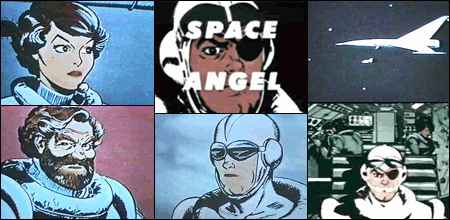
Alex became art director for the short-lived Space Angel animated series( along with Jonny Quest creator Doug Wildey). Space Angel was a unique science fiction show that used the Synchro-Vox method of animation (superimposing moving human lips on static, non-moving cartoon images). Space Angel led Alex to being hired by Hanna-Barbera.
In the late 60’s, Hanna-Barbera was instructed by the CBS head of daytime programming ,Fred Silverman, to create a new lineup to go head to head with NBC’s popular Saturday morning cartoons. As NBC relied on strong comedic cartoons, Silverman decided they needed to go in the opposite direction of action-adventure. Utilizing his experience in comics, Alex would then be tasked to create, design and storyboard a new wave of superhero shows for the H-B brand that would follow a formulaic series of tropes unique to each show.
Stay toon’d for Part 2 next Sunday!
-JaDarrel Belser

